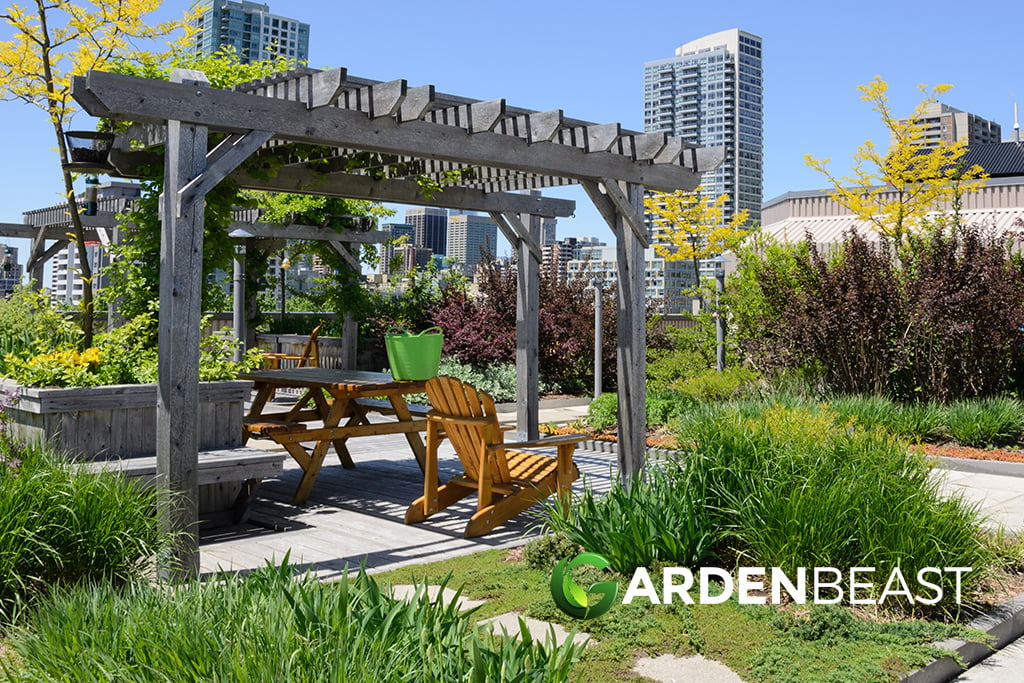Introduction
Creating a rooftop garden is a transformative way to bring greenery into urban spaces, enhance your home’s aesthetic, and promote environmental benefits. Whether you live in a bustling city or a suburban area, a rooftop garden can provide a serene escape, improve air quality, and even help reduce energy costs. This comprehensive guide will walk you through everything you need to know to create a thriving rooftop garden—from planning and design to plant selection and maintenance.
Why Create a Rooftop Garden?
Environmental and Personal Benefits
- Improves air quality: Plants absorb carbon dioxide and release oxygen, helping to purify the air around your home.
- Reduces heat island effect: Rooftop gardens help cool urban areas by providing shade and evapotranspiration.
- Enhances mental well-being: Gardening reduces stress and promotes relaxation.
- Increases property value: A well-designed rooftop garden can raise your home’s market appeal.
Urban Space Optimization
With limited ground space in cities, rooftops offer an untapped area for gardening. Utilizing this space not only maximizes your property but also contributes to urban biodiversity by attracting pollinators and birds.
Planning Your Rooftop Garden
Assess Structural Integrity
Before starting, consult a structural engineer to ensure your roof can support the additional weight of soil, plants, and garden infrastructure. Factors to consider include:
- Load-bearing capacity
- Waterproofing and drainage
- Wind exposure
Define Your Garden’s Purpose
Decide if you want a space for growing edible plants, a relaxing retreat, or a decorative green space. This will guide your design and plant choices.
Choose the Right Containers and Soil
- Use lightweight containers designed for rooftops.
- Opt for high-quality, well-draining soil mixes to prevent waterlogging.
- Incorporate soil amendments like compost for nutrient richness.
Selecting Plants for Your Rooftop Garden
Best Plant Types
- Drought-tolerant plants: Succulents, lavender, sedum.
- Edibles: Herbs like basil, mint, and vegetables like cherry tomatoes.
- Climbers and vines: Clematis, ivy, to add vertical greenery.
Consider Climate and Exposure
Choose plants suited to your local climate and rooftop conditions, such as wind and sun exposure. Native plants often perform best and require less maintenance.
Installation and Maintenance Tips
Installation Steps
- Clean and prepare the rooftop surface.
- Install waterproof membranes and root barriers.
- Set up containers and irrigation systems.
- Plant according to your design.
Maintenance Best Practices
- Water regularly but avoid overwatering.
- Fertilize with organic nutrients monthly.
- Prune and remove dead foliage to encourage growth.
- Monitor for pests and diseases.
Real-World Examples and Expert Insights
Studies from the National Gardening Association show that rooftop gardens can reduce building energy costs by up to 15%. Urban planners recommend incorporating green roofs as part of sustainable city development.
Expert gardener Maria Lopez emphasizes, “Start small and choose resilient plants to build a sustainable rooftop garden that thrives with minimal intervention.”
Conclusion
Creating a rooftop garden is an achievable and rewarding project that offers environmental, aesthetic, and personal benefits. By carefully planning, selecting suitable plants, and maintaining your garden thoughtfully, you can transform your rooftop into a lush, tranquil oasis. Start today and enjoy the fresh air, visual beauty, and satisfaction of your own urban garden retreat.
